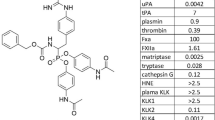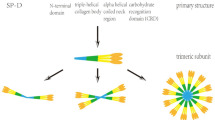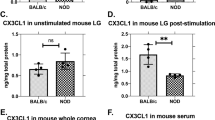Abstract
The best known physiologic function of secreted phospholipase A2 (sPLA2) group IIA (sPLA2-IIA) is defense against bacterial infection through hydrolytic degradation of bacterial membrane phospholipids. In fact, sPLA2-IIA effectively kills Gram-positive bacteria and to a lesser extent Gram-negative bacteria and is considered a major component of the eye’s innate immune defense system. The antibacterial properties of sPLA2 have been demonstrated in rabbit and human tears. In this report, we have analyzed the bactericidal activity of dromedary tears and the subsequently purified sPLA2 on several Gram-positive bacteria. Our results showed that the sPLA2 displays a potent bactericidal activity against all the tested bacteria particularly against the Staphylococcus strains when tested in the ionic environment of tears. There is a synergic action of the sPLA2 with lysozyme when added to the bacteria culture prior to sPLA2. Interestingly, lysozyme purified from dromedary tears showed a significant bactericidal activity against Listeria monocytogene and Staphylococcus epidermidis, whereas the one purified from human tears displayed no activity against these two strains. We have also demonstrated that Ca2+ is crucial for the activity of dromedary tear sPLA2 and to a less extent Mg2+ ions. Given the presence of sPLA2 in tears and intestinal secretions, this enzyme may play a substantial role in innate mucosal and systemic bactericidal defenses against Gram-positive bacteria.






Similar content being viewed by others
References
Balsinde, J., Winstead, M. V., & Dennis, E. A. (2002). FEBS Letters, 531, 2–6.
Wang, G., Qian, P., Xu, Z., Zhang, J., Wang, Y., Cheng, S., et al. (2012). Journal of Neuroinflammation, 9, 170–185.
Dan, P., Rosenblat, G., & Yedgar, S. (2012). European Journal of Pharmacology, 691(1–3), 1–8.
Huwiler, A., Staudt, G., Kramer, R. M., & Pfeilschifter, J. (1997). Biochimica et Biophysica Acta, 1348(3), 257–272.
Yedgar, S., Lichtenberg, D., & Schnitzer, E. (2000). Biochimica et Biophysica Acta, 1488(1–2), 182–187.
Murakami, M., Taketomi, Y., Miki, Y., Sato, H., Hirabayashi, T., & Yamamoto, K. (2011). Progress in Lipid Research, 50, 152–192.
Buckland, A. G., & Wilton, D. C. (2000). Biochimica et Biophysica Acta, 1488(1–2), 71–82.
Beers, S. A., Buckland, A. G., Koduri, R. S., Cho, W., Gelb, M. H., & Wilton, D. C. (2002). Journal of Biological Chemistry, 277(3), 1788–1793.
Wei, Y., Epstein, S. P., Fukuoka, S., Birmingham, N. P., Li, X. M., & Asbell, P. A. (2011). Investigative Ophthalmology & Visual Science, 52(7), 4780–4788.
Nevalainen, T. J., Graham, G. G., & Scott, K. F. (2008). Biochimica et Biophysica Acta, 1781, 1–9.
Singer, A.G. Ghomashchi, F. Le Calvez, C. Bollinger, J. Bezzine, S. Rouault, M. Sadilek, M. Nguyen, E. Lazdunski, M. Lambeau, G. and Gelb, M.H. (2002) J Biol Chem. 48535-48549.
Murakami, M., Taketomi, Y., Sato, H., & Yamamoto, K. (2011). Journal of Biochemistry, 150(3), 233–255.
Chen, T., Zhou, G. H., Xu, X. L., Zhao, G. M., & Li, C. B. (2010). Meat Science, 84(1), 143–146.
Nevalainen, T. J., Aho, H. J., & Peuravuori, H. (1994). Investigative Ophthalmology & Visual Science, 35(2), 417–421.
Aho, H. J., Saari, K. M., Kallajoki, M., & Nevalainen, T. J. (1996). Investigative Ophthalmology & Visual Science, 37(9), 1826–1832.
Saari, K. M., Aho, V. V., Paavilainen, V., & Nevalainen, T. J. (2001). Investigative Ophthalmology & Visual Science, 42, 318–320.
Girgis, D. O., Dajcs, J. J., & O’Callaghan, R. J. (2003). Investigative Ophthalmology & Visual Science, 44(1), 197–202.
Qu, X. D., & Lehrer, R. I. (1998). Infection and Immunity, 66, 2791–2797.
Moreau, J. M., Girgis, D. O., Hume, E. B. H., Dajcs, J. J., Austin, M. S., & O’Callaghan, R. J. (2001). Investigative Ophthalmology & Visual Science, 42, 2347–2354.
Berman, E. R. (1991). Biochemistry of the eye (pp. 63–88). New York: Plenum.
Laemmli, U. K. (1970). Nature, 227, 680–685.
Thammasirirak, S., Pukcothanung, Y., Preecharram, S., Daduang, S., Patramanon, R., Fukamizo, T., et al. (2010). Comp Biochem Physiol C Toxicol Pharmacol, 151, 84–91.
Abousalham, A., & Verger, R. (2000). Biochimica et Biophysica Acta, 1485, 56–62.
Bradford, M. M. (1976). Analytical Biochemistry, 72, 248–254.
Hewick, R. M., Hunkapiller, M. W., Hood, L. E., & Dreyer, W. J. (1981). Journal of Biological Chemistry, 256, 7990–7997.
Canfield, R. E., Kammerman, S., Sobel, J. H., & Morgan, F. J. (1971). Nature: New Biology, 232, 16–17.
Kawamura, S., Toshima, G., Chijiiwa, Y., Torikata, T., & Araki, T. (2012). Bioscience, Biotechnology, and Biochemistry, 76, 691–698.
Kari, O., Aho, V. V., Peltonen, S., Saari, J. M., Kari, M., Maatta, M., et al. (2005). Acta Ophthalmologica Scandinavica, 83, 483–486.
Li, K., Liu, X., Chen, Z., Huang, Q., & Wu, K. (2010). Molecular Vision, 14, 2084–2091.
Chen, D., Wei, Y., Li, X., Epstein, S., Wolosin, J. M., & Asbell, P. (2009). Experimental Eye Research, 88, 880–888.
Bera, A., Herbert, S., Jakob, A., Vollmer, W., & Götz, F. (2005). Molecular Microbiology, 55(3), 778–787.
Padgett, G. A., & Hirsch, J. G. (1967). The Australian Journal of Experimental Biology and Medical Science, 45, 569–570.
Yamamoto, G. K., & Allansmith, M. R. (1979). Complement in tears from normal humans. American Journal of Ophthalmology, 88, 758–763.
Bron, A. J., & Seal, D. V. (1986). Transactions of the Ophthalmological Societies of the United Kingdom, 105, 18–25.
Sechi, A. M., Cabrini, L., Landi, L., Pasquali, P., & Lenaz, G. (1978). Archives of Biochemistry and Biophysics, 186, 248–254.
Verger, R., Mieras, M. C., & de Haas, G. H. (1973). Journal of Biological Chemistry, 248(11), 4023–4034.
Fleer, E. A., Verheij, H. M., & de Haas, G. H. (1981). European Journal of Biochemistry, 113(2), 283–288.
Scott, D. L., Otwinowski, Z., Gelb, M. H., & Sigler, P. B. (1990). Science, 250(4987), 1563–1566.
Zhao, H., & Kinnunen, P. K. (2003). Antimicrobial Agents and Chemotherapy, 47(3), 965–971.
Karray, A., Ali, Y. B., Gargouri, Y., & Bezzine, S. (2011). Lipids in Health and Disease, 12, 10–14.
Ben Bacha, A., Abid, I., & Horchani, H. (2012). Applied Biochemistry and Biotechnology, 168(5), 1277–1287.
Acknowledgments
This research project was supported by a grant from the research center of the Center for Female Scientific and Medical Colleges in King Saud University.
Author information
Authors and Affiliations
Corresponding author
Rights and permissions
About this article
Cite this article
Ben Bacha, A., Abid, I. Secretory Phospholipase A2 in Dromedary Tears: a Host Defense Against Staphylococci and Other Gram-Positive Bacteria. Appl Biochem Biotechnol 169, 1858–1869 (2013). https://doi.org/10.1007/s12010-013-0113-6
Received:
Accepted:
Published:
Issue Date:
DOI: https://doi.org/10.1007/s12010-013-0113-6




